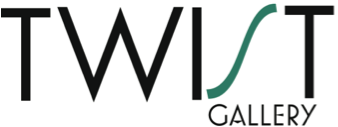About
Born and raised in Scarborough, Ontario- Amy Smillie has always loved the sights and sounds of the northern Canadian wilderness, but spent a more significant portion of her youth in and around cities—with all of their diverse communities of people, vibrant locales of bustling activity, and intriguing suburban landscapes. The first of her known family to dedicate herself to a lifelong study of the visual arts, she graduated from OCADU with a BFA in Drawing and Painting, and minoring in English, also took courses in the multidisciplinary fields of psychology, sociology, and the natural sciences to help further an awareness of her practice.
Something of an independent cultural researcher in her spare time, Amy is an avid collector of texts documenting proven "fact", fiction, and all of life's hazy uncertainties. Her final thesis at OCADU explored the fundamental ideas behind French cultural theorist Jean Baudrillard's Postmodernist conceptions of societal Simulacrum, and the cold artificiality that threatens to bring forth an escapist-flavoured "cult of the Self".
The body of work Amy has produced during her years at OCAD is thereby informed by this foundation, and though never intentionally theme-based, what might be thought of as an "overarching notion" between her pieces is the tendency towards creating celebratory studies of life through the everyday becoming uncanny. Subtle, and (for the most part) not very loud attempts to demonstrate how even the most outwardly mundane of objects, outlooks, and domestic situations hold a spark. One that can become anything from psychologically fascinating, to inexplicably unsettling, depending on their presentation within an ordered space.
As a contemporary painter, and student of psychological theory— making her intuitive art, and urging its viewers to look at it through a deconstructive as much as imaginative scope, Amy wishes to leave others with potentially new, and thought-provoking ways of visualizing the way the world works. She draws stylistic inspiration from an eclectic mix of Jack Chambers, Chuck Close, Vincent Van Gogh, René Magritte, Mike Bayne, Karin Bubas, and the entire innovative host of 19th century French Impressionists.
Amy Smillie is currently attending the Toronto Art Therapy Institute (TATI) as a thesis student, where she hopes to use her accumulated artistic experience in a psychological frame of reference. Sharing the healing benefits of the creative process with those whose words can never fully express the depths of their strongest feelings.
Statement
How is it that I might best describe the kind of art that I do? Well, for one thing, my approach is highly intuitive. Jungian analytical psychology would undoubtedly have quite a bit to say about all the symbolism and archetypes being used, but from my own individual perspective, what I really just end up doing is painting figures and objects I feel would create an engaging balance between aesthetic and message. Colour and Content, and wait to see where that takes me.
I have always enjoyed contrasts in painting—organic vs. geometric, complex vs. simplified shapes—and have discovered upon many a piece's completion that the human subjects serve as miniature environments unto themselves. That each figure remains a holistic entity apart from nature, as much as nature constitutes a central part of their being.
My creative process includes the extensive use of photography to get a sense for the hyperreal, without ever actually trying to delve into the perfect mimicry the reference already provides. Instead just focusing on the initial "impressions" of the copied image (cue early Monet influence), but also occasionally seeking to digitally manipulate it via colour enhancement, or fragmentation of the figures and the background. This gives my viewers "the blurry glimpses of clarity beneath the artifice", so to speak, and has select pieces of my artwork embody the idea of perceptual distortion. The eye sees what is in front of it, but it does not always see the context.
Using my preferred medium of acrylic paint on surfaces such as canvas, wood panelling, masonite, and gesso board, I seek to illustrate the odd dichotomy between image and likeness. Rendering human subjects comes the most naturally, due to my thinking of them being the single greatest challenge of capturing a "spirit" of something, although landscapes also hold a special place in my heart. To me a vast, open landscape is illustrative of the idealist's dream of infinite freedom, and also the freedom of being able to pursue and realize your greatest dreams.
Above all else, I as an artist, but also a cultural researcher, endeavor to share the healing benefits of art with others through the pursuing of a profession that effectively combines my two favourite fields of art and psychology. It is one of my primary goals in life- to bring a unique sense of beauty and interest to the visual arts sphere through engagement with the community, while slowly working towards becoming an RCAT— or Registered Canadian Art Therapist.
Place
Toronto, Canada

